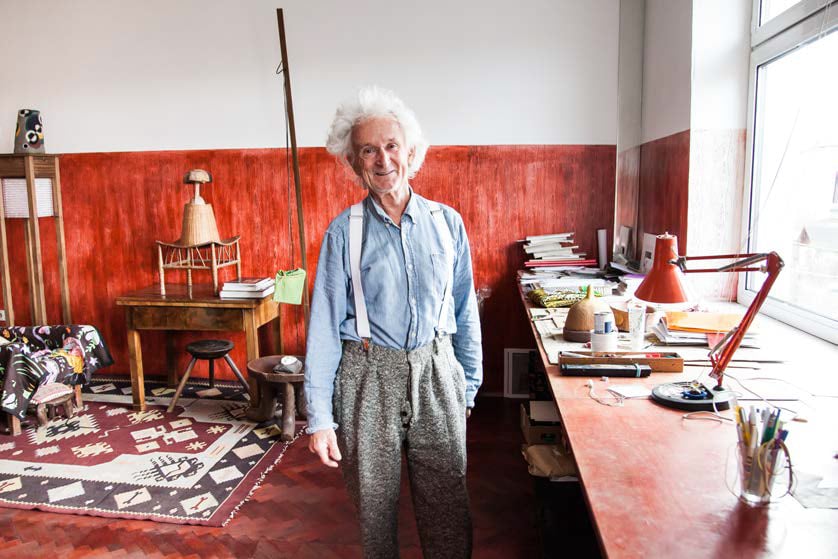
The family and gallery of the late Austrian artist Heinz Frank are seeking urgent help to preserve the stunningly unique Viennese apartment he lived in for most of his life, slowly transforming it into a gesamtkunstwerk. Filled with his work, design and possessions, Frank’s home is a testament his anarchic approach. But after a previous failed attempt, this is the final chance the group have to make authorities declare the artist’s flat culturally significant, and prevent it from being sold and lost to the public forever.
“During his 50-year idiosyncratic practice, Heinz Frank followed his vision unconditionally and without any compromise,” his gallerists, Isabella Ritter and Katharina Schendl of LambdaLambdaLambda, told artnet News. “He was completely uninterested in trends and this resulted in a body of work that is not only extremely rich and coherent but also maintains its relevance.”
Heinz Frank’s flat in Vienna. Photo: Wolfgang Thaler.
Supporters of the cause face a big challenge, since Frank only rented the apartment. This means they are at the mercy of the property’s owner, who has rejected an offer from the artist’s daughters to pay a higher rent to keep the apartment, and demanded his family move out his possessions by June 2022. If this comes to pass, Frank’s daughter will be need to find a new home for his work, and the space will be renovated.
This means the only option left for the Foundation Büro Heinz Frank, which oversees his estate, is to appeal to the federal monument office to protect the flat, by designating it as cultural heritage.
Heinz Frank’s flat in Vienna. Photo: Heinz Frank’s Viennese Flat. Photo Wolfgang Thaler.
“Heinz was part of the Vienna avant-garde of the 1960s and a friend of Walter Pichler and Bruno Gironcoli, the authors of the famous Vienna Group,” curator Georg Schöllhammer, who is a member of the artist’s foundation, told Artnet News. “He was influential to artists and architects for four generations. Franz West once called him, ‘a far better artist than I.’”
Frank, who passed away in August 2020, aged 81, worked mainly in sculpture and installation art, but he also painted and made furniture. The floor and bottom half of the walls in his flat are painted to resemble wood grain, and there are many idiosyncratic built-in cupboards and storage spaces created by Frank.
Heinz Frank’s flat in Vienna. Photo: Heinz Frank’s Viennese Flat. Photo Wolfgang Thaler.
“His flat is a rare amalgam of visual arts and architecture, made to fit his owner like a dress,” his gallerists said, adding that, “Heinz was dandy-esque, but never loud.” His decorations for the apartment were influenced by the late Modernism aesthetic of Austrian architects Adolf Loos and Josef Frank and Viennese tradition, the dealers said, as well as the Radical Design movement led by Italian firm Superstudio.
Born in Vienna in 1939, Frank trained and worked as an electrician until enrolling in an architecture course at the Academy of Fine Arts Vienna. Spending his entire life in the city, he became part of its cultural fabric, and was a popular local figure among the art world there. Frank enjoyed more success in the final years of his life, contributing a large sculptural work to the second Riga International Biennial of Contemporary Art in 2020. His work is also in the permanent collections of the Centre Pompidou, the Museum of Modern Art Vienna and the Rupertinum, Salzburg.
Frank’s supporters now have just a few months to turn the wheels of bureaucracy to preserve his legacy in Vienna.